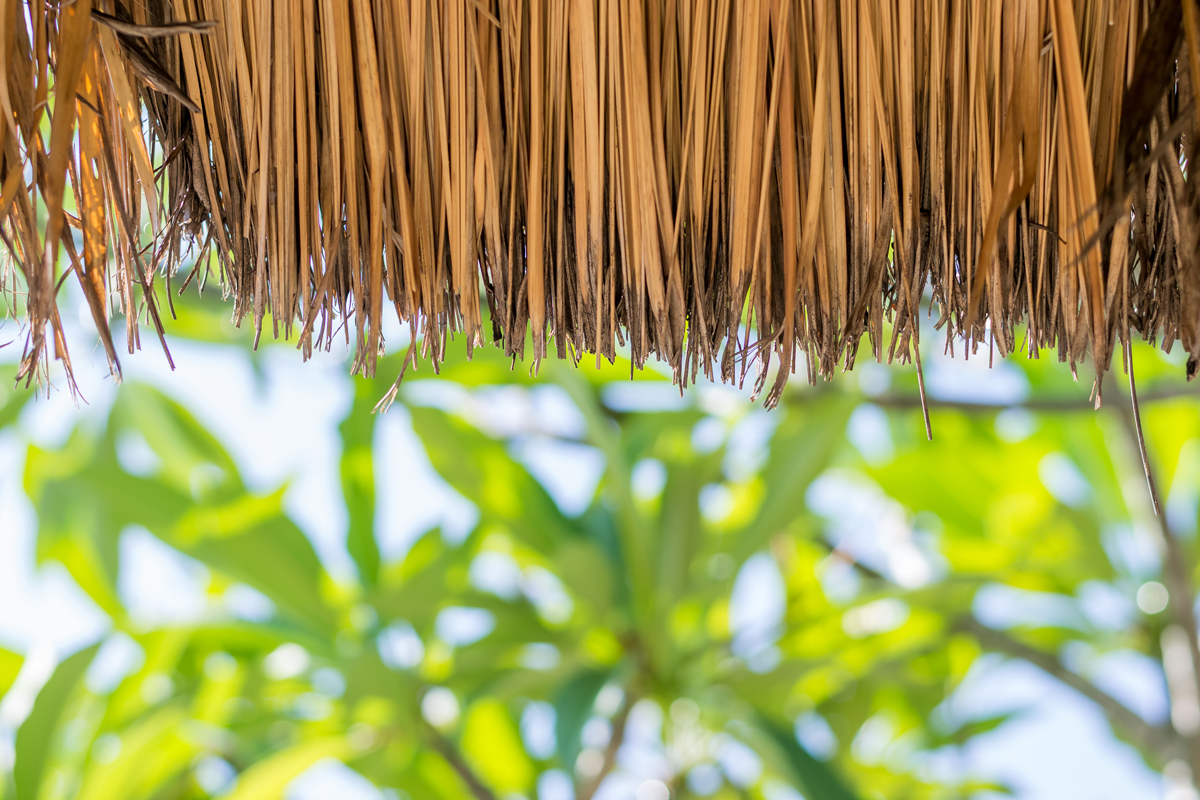Dating back to the ancient civilizations of indigenous groups including the Aztec, the Inca and the Maya, palapas and thatched buildings have long been a popular architectural tradition in Mexico. A palapa is an open-sided structure consisting of sustainable materials including a thatched roof made with dried palm leaves and branches. They continue to be the favored choice for beachside bars and restaurants as well as resorts with a tropical vibe. Because they offer a fantastic solution for providing shade and a cool place to relax when it gets too hot in the sun, they are extremely common throughout the coastlines of Mexico which are home to some of the most stunning beaches in the world.
Thatched roofs, which are the most common type in the world, are most often crafted in Mexico with dried palm leaves that are layered in a pattern designed to shed water and keep the inner roof dry. This roofing method, which has been around for centuries, is a common architectural feature found in both temperate and tropical climates including several Central American countries. Builders in developing nations still use this technique because it is cost effective, largely due to the use of local, sustainable vegetation that is readily available.
Palapa roofs are lighter than other roofing choices, which means less timber is needed to support them, making them very ecologically friendly. They are an ideal choice for irregular roof structures because the materials don’t need to fit exact standard dimensions to produce a roof that functions well. As an added bonus, they can be crafted with used, natural and recycled materials for the ultimate in sustainable building.
Ironically, this style of structure has become extremely popular in developed countries in recent years as well because more homeowners want to use sustainable materials whenever possible, or they are looking for a more rustic style in their backyard. Fortunately, there are plenty of natural characteristics of thatched structures that make them naturally suited to high performance and ready to face the elements.
When applied correctly, thatched roofs on palapas are naturally resistant to most things the weather can throw their way, including major winds. One of their best features is that they don’t absorb much water, and a wet roof will not get heavy with water retention if it is properly maintained, meaning thatched styles are perfectly suited to tropical regions that receive heavy rainfall. This is achieved by designing the roof with a pitch of at least 50 degrees, which guides rain down the slope so quickly that it is off of the roof before it can have any effect on the structure. The air pockets automatically built into a thatched roof provide amazing natural insulation too, which ensures the structure will stay cool in the heat and warm when the temperature drops.
Enjoy some downtime underneath a relaxing palapa and appreciate the simple yet timeless design the next time you visit Mexico.

